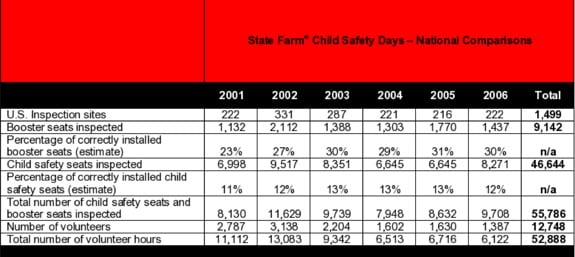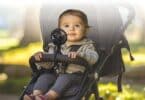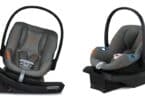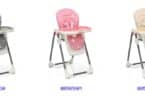In the United States in 2010, the CDC reports that more than 1,200 children, aged 14 years and younger, died as occupants in motor vehicle crashes, and approximately 171,000 were injured.
One study they conducted found that, in one year, more than 618,000 children ages 0-12 rode in vehicles without the use of a child safety seat or booster seat, or a seat belt at least some of the time.
Remember when we were kids and would ride in the back window of our parent’s car? Scary when you consider the accident rate was almost 4 times higher than it is now. This is likely thanks to the fact that the products that have been created to keep our kids safe have evolved – immensely!
Side Impact Protection, advanced cushion systems to protect your child’s head, steel-reinforced metal frames, and easy-to-adjust harness systems are just a couple of the ways manufacturers have stepped up to ensure that your little one is covered from all angles in the event of an accident. Plus, most seats on the market now have a minimum 5-point 60lb weight limit, which ensures that your child will be able to be in the seat for longer.
But your kids have to be in their seats in order to benefit from these safety advancements AND those seats have to be installed correctly. One recent study found that 72% of nearly 3,500 observed car and booster seats were misused in a way that could be expected to increase a child’s risk of injury during a crash. State Farm’s numbers support those stats.
In honor of Child Passenger Safety Week we would like to offer some car seat safety tips From Julie Vallese, Safety 1st’s Consumer Safety Expert.
- Importance of Rear Facing – In March of 2011 the American Academy of Pediatrics (AAP) updated their car seat recommendations advising that children should remain rear-facing until the age of two, or until they reach the maximum height and weight requirements allowed by their car seat. According to a study in the Journal of Injury Prevention children under the age of two are 75 percent less likely to die or be severely injured in the event of a car crash if they are rear-facing. When a child is rear facing their head, neck and spine are better supported and in the event of an accident, crash forces are distributed over the child’s entire body.
- Installation – According to the National Highway Traffic Safety Association, 75% of car seats are installed incorrectly. Every car and car seat has different requirements for the safest installation so before you get started it is important to read both the car seat and car manual. Typically the center rear seat is the safest place for a car seat, and never install a car seat in the front seat. If your car does not have a latch connector for the middle seat, you can use the middle seat belt to properly secure the base. When installing, make sure the base of the car seat moves no more than an inch from side to side. An easy way to test this is to hold at the belt path.New parents and grandparents are encouraged to attend a car seat check before the baby is born. However, don’t just rely on the experts. You’re likely going to be taking the car seat out and installing it somewhere else at some point, so make sure you’re comfortable with the process too.
- Car Seat Expiration – Never use used or old car seats. Car seats do have an expiration date and it is to understand the risks associated with using an expired or old car seat. The reason for an expiration date is because plastic can warp and materials can fray, which can make car seats less safe to use. Car seat technology and state and federal car seat regulations change. A car seat deemed safe more than six years ago may no longer meet federal testing regulations. Important warning labels may wear out and instruction books may get lost, which can lead to improper use of the car seat.









Never use an expired car seat
Keep your child in a 5-pint harness as long as possible.
Always read your car seat manual to insure you are using your seat correctly. 🙂
Never hang any toy bars on the carseat, they are only made for strollers.
You use the pinch test to check harness tightness, not two fingers under the straps, that is an old way and not to way to do it properly now.
Keep your young kids rear facing and in a 5 point harness for as Long as possible.